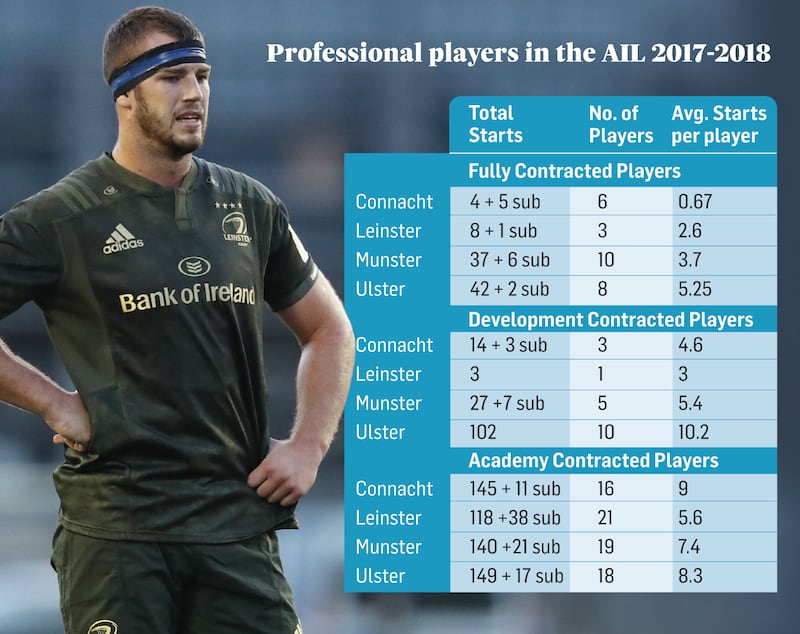The elite divisions of the All-Ireland League, 1A and 1B, begin with the meeting of three-time and defending champions Lansdowne who travel to Castle Avenue to face a Clontarf team that won the title in 2014 and 2016 in a self-styled "Friday Night Lights" clash (8.0).
Shannon, who lead the title count with nine outright victories, are back among their peers following a five-year hiatus, after they claimed the Division 1B crown last season.
It is supposed to be the final season under the present framework but quite what restructuring will be agreed between the clubs and the IRFU going forward is not obvious at this point.
There is a big gap between what some of the clubs prefer and an IRFU model that is based on geographical inclusivity at elite level with no relegation for two years, while maintaining an outline commitment to ensure that the upper echelons of the All-Ireland Leagues (AIL) are not only a pathway for aspiring professional rugby players but an environment where they would regularly compete when not required by their respective provinces.
The clubs rejected a union proposal that the current limit of four professional players – two forwards, two backs – be increased to eight (four and four) with a compromise of six players, also rejected. These player proposals only apply in Divisions 1A and 1B. The participation agreements are due to be returned to the IRFU this week.

It’s against this backdrop or impasse that it’s worth examining the participation level of professional players in the 2017-2018 All-Ireland League – specifically in Divisions 1A and 1B. The parameters that govern the statistics are based on the 30 starting places in the 10 games across the two divisions on each weekend across the 18-match regular season.
There were 91 ‘fully contracted player starts’ (FCP) which represents a little less than two per cent of the overall player total across the season in question. That number increased to 146 ‘development contracted player starts’ (DCP) or three per cent and in terms of the ‘academy contracted player starts’ (ACP) that figure jumped to 552 and represents just under 10 per cent of the total player starts.
The FCP group, as the graphic outlines, those 91 starts have been accumulated by just 27 players and to delve slightly deeper it’s germane to highlight the number of clubs by province that compete in Divisions 1A and 1B.
So the six players in Connacht all came from the Buccaneers club, the province's only representative in the AIL at that level. Leinster were represented by nine clubs, Munster by seven and Ulster by three. This season there will be no Ulster or Connacht clubs in Division 1A.
Principal beneficiaries
In the FCP category, Munster clubs fielded the most players (10) but across the Ulster clubs, despite two fewer players (eight) they racked up 42 starts. In terms of players on development contracts (DCP) Ulster clubs led the way in terms of number of players (10) and also starts (102) in contrast to the single Leinster player who started three matches.
There is no argument that the principal beneficiaries, evident in the figures compiled, are those on academy contracts (ACP) in the four provinces.
Whereas there were 27 fully contracted players used in the AIL last season and 19 on development deals, that number jumped to 74 when listing the involvement of academy players and they accounted for 552 starts.
This means that the predominant category of professionally contracted players in the All-Ireland League last season was largely aged between 18 and 21 years.
The league represents a significant forum for the development of young players and that’s is why the IRFU is keen that a minimum of two clubs from all four provinces are represented in two divisions of eight teams – no relegation for two years – so that there is a greater tie-up between the elite end of the league and professional rugby.
That’s certainly not the clubs’ priority, nor should it necessarily be. But a central tenet in their argument for limiting the number of professionally contracted players that are eligible to play in a match, centring on health and safety in pitting amateurs against professionals is less persuasive given the figures.
Most clubs have two training sessions a week and players have their own gym/strength & conditioning regimes that are professional in orientation.
The IRFU want the elite divisions to be an adjunct to professional rugby, the clubs don’t want to give up control.
If there is no compromise then the union will look to find game-time elsewhere for the professionally contracted players in an inferior competition from which neither side will benefit but ultimately it is the professionally contracted players that are set to lose most.















